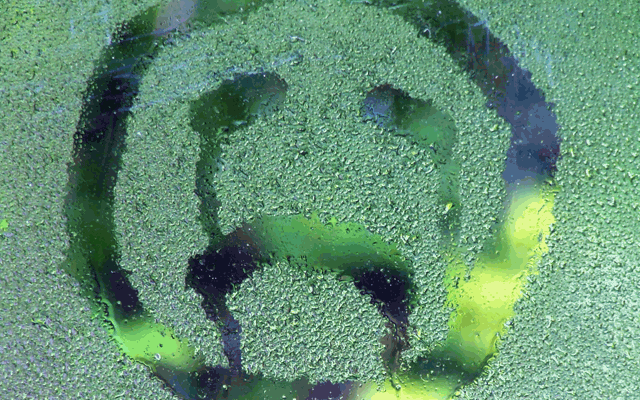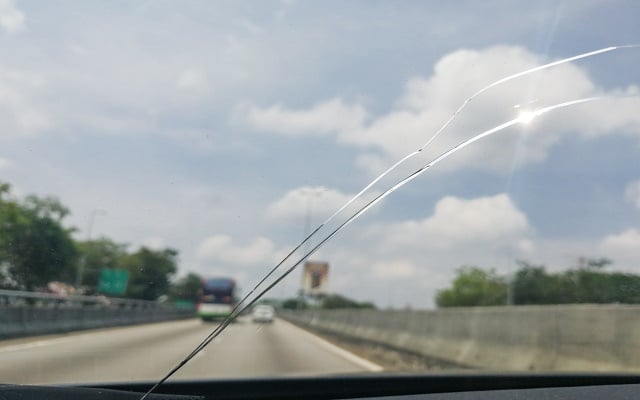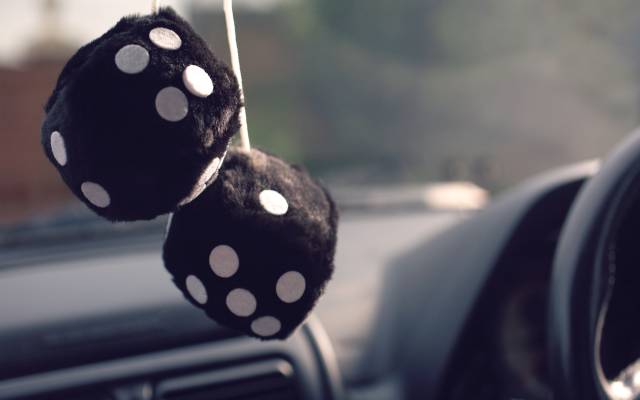Your car's windscreen isn’t just a piece of glass to keep the wind and rain out. It’s a protective barrier that keeps debris such as stones, dust, and insects from getting inside your car.
Driving with a dirty windscreen creates blind spots and is unsafe. For example, sunlight or headlights shining through a dirty windscreen may produce a hazy or glaring effect which will impair your sight.
A clear windscreen is essential for good vision when driving on the road. A bonded windscreen is an integral part of the vehicle body, contributing towards strength and stiffness.
Whether it's a foggy windscreen or a small crack, read on to learn how to stop your windscreen from becoming dangerous. .

What you’ll need for windscreen cleaning
There are many ways to clean your windscreen. You may have even seen some “hacks” online. But the best way is the classic method which uses the following:
- 1 clean cloth
- 1 glass cleaner
- 2 microfibre cloths
- 1 spray bottle
It’s important to use clean and lint-free materials. Leftover particles or debris can create scratches and smudges that may impair visibility or damage your windscreen.
Cleaning the exterior
Step 1 - Prepare the windscreen
- Carefully lift up your windscreen wipers away from the glass. (On some cars, you’ll need to use the “wiper maintenance” mode rather than lifting. Info will be in the handbook.)
- If your windscreen’s very dirty, wash it first with water and a brush
- Make sure the windscreen is dry afterwards
Step 2 - Use glass cleaner
- Spray half your windscreen with alcohol-based glass cleaner
- Avoid ammonia-based cleaners which can cause damage
Step 3 - Wipe with a cloth
- Use a clean microfibre cloth to wipe your windscreen in long, smooth strokes
- You can wipe top to bottom and side to side to make sure no spots are missed
Step 4 - Repeat
- Clean the other half of your windscreen by spraying the other side and cleaning with a cloth
Step 5 - Buff the glass
- Buff the glass with a second clean microfibre cloth.
How to clean windscreen wipers
If your windscreen is your eyes on the road, consider the windscreen wipers arms that help the eyes function. Simply put, you will need them in good working condition to safely drive in bad weather such as rain, sleet, snow, as well as to remove dirt and grime from the windscreen.
For good visibility, you need clean windscreen wipers. They need to be cleaned and checked regularly for dirt, dust and debris build-up. Allowing these things to clog your windscreen wipers can cause friction and wear the wiper blades down.
To clean car wipers, give the rubber of the windscreen wipers a good clean with screen wash to remove dirt and debris. This will make them work much better and could extend their life.
Cleaning the interior of the windscreen
It’s just as important to clean the inside of your windscreen as the outside. Over time, chemicals from leathers, plastics and vinyls inside your car are released in a process called “off-gassing”. These gases can make the inside of your windscreen greasy.
How to clean the inside:
- Use a clean cloth to avoid smears
- Spray the cleaner onto the cloth instead of the glass to avoid getting it on your hands
Can you clean your windscreen with vinegar?
You can add a small amount of vinegar and methylated spirits to water to make an effective cleaning solution. The vinegar cleans well and the alcohol makes the solution evaporate quickly, reducing smears.
But both of these chemicals can be unpleasant smelling. Plus, getting the ratio perfect is a bit hit and miss. When you add in the cost and preparation time, you’re no better off that if you use a proper glass cleaner.
Shop-bought glass cleaner has the added benefit of a pleasant perfume in most cases. It’s particularly welcome when cleaning inside the windows.
Dealing with windscreen fog

Windscreen fog is caused by temperature differences between the inside and outside of your car, which makes moisture form on the inside of the windscreen.
Picture this: it’s a cold day and you’re on the M25 with your heat on full blast. Your car is now warmer and more humid than the cold air outside, which will cause your windscreen to fog up.
Windscreen fog can also be caused by rain and simply driving through fog itself.
A misted-up windscreen is common and preventable, but it’s important to make sure it’s thoroughly clear before driving. Here are some tips for clearing your windscreen:
- Look for the windscreen demister button in your car that'll direct maximum airflow to the windscreen to clear it quickly
- Some cars have an electrically heated front windscreen with very fine wire heating elements embedded in the glass
- Your air-con isn’t just for summer – it can help to dry the air in the car and clear a misted windscreen
- Keep a microfibre cloth in the car to wipe the screen if it mists over again while you're driving
For rear screens and wing mirrors, try these steps:
- Rear screens have electrical heating elements running across them to clear mist quickly
- You might be lucky and have heated mirrors. If not, wipe your mirrors with a lint-free cloth
- You could also try demisting sprays, which claim to leave your windshield fog free for a few weeks
For foggy glasses, wipe them with a microfibre lens cloth to get rid of all smears. Anti-fog lenses are also available and are offered by most opticians.
How to defrost your windscreen
It’s important to make sure that your windscreen is completely defrosted before you try driving in winter. It’s not enough just to clear a small patch to see through.
- Make sure your wipers aren’t on before you switch on the engine, in case they’re frozen to the glass.
- Turn on the engine and turn on the warm air blower. You can also use the aircon to remove moisture inside the car.
- Turn on the rear-windscreen heater and heated mirrors if you have them.
- Use a scraper and de-icer on your windscreen while you wait for the car to heat up.
Learn more about how to defrost a car windscreen with our step-by-step video.
How to avoid windscreen glare
The glare of light from the sun or passing cars can distract you when you’re driving.
The best way to reduce glare is to make sure that your windscreen is clean inside and out, and free from any cracks or stone chips. Cleaning your windscreen and wiper blades will help get rid of smears.
- Even if you're not a smoker, a hazy film will build up on the inside of the glass, so you need to clean it regularly.
- Scratches, abrasions and chips on the outside can make dazzle from the sun worse too.
- New blades clear the screen more effectively and help reduce the dazzling effect of the sun – try to renew them once a year.
- Keep the screen-wash topped up using a good quality screen-wash additive to help clean the screen all year round as well as reduce freezing in cold weather.
If you wear glasses without glare protection, you could suffer from headaches or eye strain when you drive. Glare-resistant lenses are available from most opticians and are ideal for frequent drivers. You can also look out for anti-glare driving glasses and driving sunglasses.

Dealing with windscreen damage
Damage to the windscreen can obstruct your vision. High mileage vehicles that have spent a lot of time on the motorway will probably have thousands of tiny chips or “pits” in the windscreen. They're very difficult to see in normal light but you’ll see them at night, when light from oncoming vehicles is refracted. It looks very similar to a very dirty windscreen. The only way to fix this is to replace the screen.
Small windscreen chips or cracks can be easily repaired using specially-developed clear plastic resins with the same optical properties as glass. But if you ignore them, they can grow. Once the damage is bigger, you're more likely to have to pay out for a new windscreen.
Find out more about windscreen chips and cracks in our article on windscreen damage and insurance. You can also read our guide which explains the risks of driving with a cracked windscreen.
Dangling objects from a rear-view mirror
Wondering if it's illegal to hang something from your rear-view mirror? You may be breaking the law if it obscures your vision.
When we spot-checked in a survey, 5% of drivers - equivalent to 1.5 million drivers at the time - had things dangling from their rear-view mirrors.*
The survey of more than 2,000 vehicles on motorways found that 1 in 20 vehicles had items dangling from their rear-view mirror which could create a blind-spot. The number 1 item was a green scented tree which seemed to be favoured by van and pick-up truck drivers.
The most bizarre and dangerous item was a silver CD. In the morning sunlight, it had the extra danger of dazzling other drivers with the reflection.
The top 5 items spotted dangling in the windscreen
- Air fresheners (mainly trees)
- Teddy bears (from small to 1 foot in length)
- Miniature footballs
- Beads and rosary beads
- Coats of arms (mainly football clubs)

Can your windscreen fail your MOT?
Regulations tell you to have a full view of the road and traffic ahead. If the driver's vision is impaired, technically the car could fail an MOT.
In your MOT, you shouldn't have a windscreen sticker, chip, crack or other obstruction covering more than 10mm wide in the area above the steering column, called ‘zone-A’.
In the rest of your windscreen, the obstruction shouldn’t be more than 40mm wide. Windscreen stickers or objects hanging from the rear view mirror could also be a problem if they're too big or poorly positioned. And that includes fuzzy dice. But it's worth remembering that so could dash-mounted tech like phones, sat-nav or dash-cams.
Windscreen wipers
Your car can fail the MOT if a wiper blade is loose or missing. You can also fail if the wipers don't clear the windscreen properly to give you a clear view of the road to the left and right sides of the vehicle, as well as to the front.
Wipers that judder, make a noise, leave bands of rain or unwashed margins should be replaced.
What are the penalties if your windscreen isn't clear?
riving safely means making sure that your line of vision is kept clear. If your vision is obscured, you might not be able to see the road ahead properly and it could even create a blind spot.
Driving with an unclear windscreen is not only dangerous but can also land you a fine and penalty points. As The Highway Code says, "windscreens and windows MUST be kept clean and free from obstructions to vision.”
Failing to keep your vision free from obstruction could:
- Land you a fine and 3 penalty points
- Mean you're held responsible if you're in an accident
- Cause your car to fail its MOT
If your windscreen is severely obstructed and causes an accident, you’ll be held responsible for it. According to the penalty code, "causing or likely to cause danger by reason of use of unsuitable vehicle or using a vehicle with parts or accessories (excluding brakes, steering or tyres) in a dangerous condition.”
To avoid fines and penalties, it’s best to always make sure your windscreen is clean and clear before driving. This ensures your safety and that of other drivers on the road.
Related content*(AA Spot-check survey of 2,000 vehicles was carried out on motorways on Monday 5 September, 2011)
